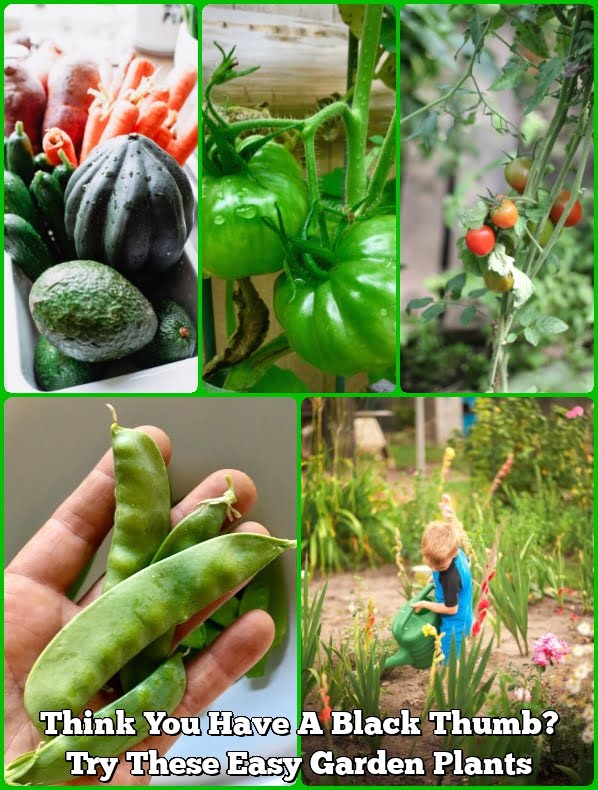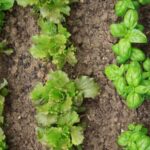Black Soil Vegetable Garden
As the name suggests, a black soil vegetable garden is one where the soil is predominantly black in color. This type of garden is often found in areas where the soil is rich in organic matter. The black color of the soil is due to the high levels of organic matter, which is made up of decomposed plants and animals.
The organic matter in black soil is what helps to make it fertile and rich in nutrients. This type of soil is ideal for growing vegetables, as it provides them with the nutrients they need to grow and thrive. Black soil is also known for its ability to hold moisture, which is another important factor when it comes to growing vegetables.
If you are looking to create a black soil vegetable garden, there are a few things you can do to make sure the soil is ready for planting. First, you need to remove any rocks or other debris from the soil. Next, you need to add some organic matter to the soil. This can be done by adding compost, manure, or other organic matter to the soil.
Once the soil is prepared, you can start planting your vegetables. Be sure to choose vegetables that are suited for your climate and garden conditions. Some of the best vegetables to grow in black soil include tomatoes, peppers, beans, and cucumbers.
Garden Soil Mix For Vegetables
One of the most important aspects of vegetable gardening is having the right soil mix. The mix you use will depend on the vegetables you are growing and the climate you are gardening in.
In general, a soil mix for vegetables should be light and fluffy, with plenty of organic matter. It should also be well-drained, to prevent waterlogging.
If you are gardening in a warm climate, you will need a soil mix that is rich in organic matter and that drains well. You can buy a commercial soil mix for vegetables, or you can make your own mix by combining equal parts of compost, sand, and soil.
If you are gardening in a cold climate, you will need a soil mix that is heavy and retains moisture. You can buy a commercial soil mix for vegetables, or you can make your own mix by combining two parts compost, one part sand, and one part soil.
No matter what climate you are gardening in, it is important to add organic matter to your soil mix. This will help to improve the soil’s texture and drainage, and it will also provide your vegetables with nutrients.
You can add organic matter to your soil mix by using compost, manure, or leaf mold. Compost is the best choice, because it is high in nutrients and it is also organic.
When you are adding organic matter to your soil mix, be sure to mix it in well. If you don’t mix it in well, the organic matter will break down slowly and it will not provide your vegetables with the nutrients they need.
Vegetable Container Garden Soil
There are a lot of factors to consider when planting a vegetable garden, but one of the most important is the soil. Different plants have different needs, and the type of soil you have will determine what you can plant and how well they will grow.
One option is to use soil from your yard, but this can be difficult because you need to find the right type of soil and you may not have enough space. Another option is to buy soil from a store, but this can be expensive and it’s not always easy to find the right type of soil.
An easier and cheaper option is to create your own soil mix for a vegetable container garden. This mix can be tailored to your specific needs, and it’s easy to change if you need to add or remove something.
To create your own soil mix, you’ll need three ingredients: potting soil, compost, and vermiculite. Potting soil is a soil mix that is specifically designed for container gardens. It is lightweight and has a high water retention rate, which is perfect for plants that don’t have a lot of room for their roots to grow.
Compost is made from organic materials like leaves, grass clippings, and vegetable scraps. It is full of nutrients that are essential for plant growth, and it also helps to improve the soil’s structure and water retention rate.
Vermiculite is a mineral that is used to improve the soil’s drainage and water retention rate. It is also a good source of nutrients, and it helps to keep the soil healthy and fertile.
To create your soil mix, start by combining one part potting soil with one part compost. Then, add a half-part of vermiculite. Mix everything together well, and store it in a container until you are ready to use it.
When you are ready to plant, fill your container with the soil mix and plant your vegetables. Be sure to water your plants regularly, and fertilize them every few weeks with a balanced fertilizer.
Your vegetable container garden will thrive with this soil mix, and you’ll be able to enjoy fresh, homegrown vegetables all season long.
Holes In Vegetable Garden Soil
There are a few common reasons why you might see holes in your vegetable garden soil. One possibility is that the soil has been compacted, which can prevent water and air from getting to the roots of your plants. This can be caused by walking on the soil, using a heavy roller, or by planting too close to each other. Over time, the soil can become harder and more difficult for plants to grow in.
Another possibility is that your soil is low in nutrients. Without essential minerals, the plants can become weak and more susceptible to pests and diseases. If your soil is low in nitrogen, for example, the plants might start to look yellow or stunted.
Finally, there could be animals digging in your garden soil. This can be a particular problem if you have a compost pile nearby, as raccoons and other animals will be attracted to the smell. To prevent animals from digging in your soil, you can try to fence off your garden, or put a lid on your compost pile.
Soil Preparation For Vegetable Garden India
Soil preparation is the single most important step in establishing a successful vegetable garden. The soil should be worked to a depth of at least 12 inches to loosen and aerate the soil and to incorporate organic matter. The addition of organic matter, such as compost, increases the water-holding capacity of the soil and helps to improve the structure and fertility of the soil.
In order to improve the fertility of the soil, it is important to test the soil for pH and nutrient levels. The pH of the soil should be between 6.0 and 7.0 for most vegetables. The soil should also be tested for the levels of phosphorus, potassium, and nitrogen. These nutrients should be added to the soil in the form of organic or inorganic fertilizers as needed.
After the soil has been prepared, the vegetable garden should be planted. The vegetables should be planted in rows, with a spacing of 18 to 24 inches between the plants. The plants should be spaced this far apart in order to allow for good air circulation, which helps to prevent the development of diseases.

If you’re looking to get into vegetable gardening, or are just looking for some tips on how to make your current garden better, then you’ve come to the right place! My name is Ethel and I have been gardening for years. In this blog, I’m going to share with you some of my best tips on how to create a successful vegetable garden.





